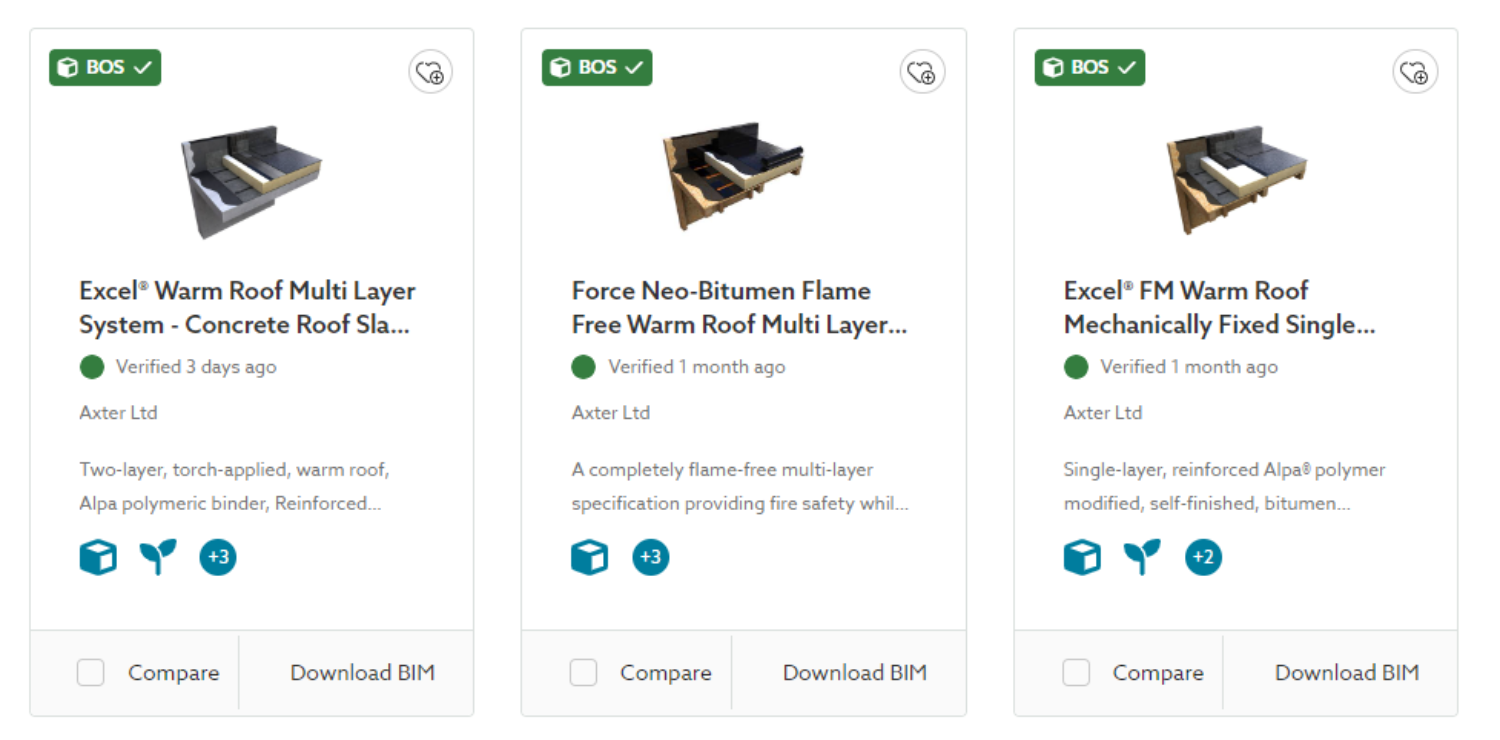
Meet our specialist: Anna Godzinska, Senior Design Technician
The use of Building Information Modelling (BIM) - a process of creating, managing and exchanging information about an asset in a collaborative way using appropriate data format - is transforming the way construction projects are run, providing opportunities to improve precision, efficiency, sustainability, collaboration, and cost management; its applications in flat roofing projects are vast.
Anna Godzinska, our Senior Design Technician – who has achieved BIM certification with the BRE Academy – shares insights into how the process is changing flat roofing design and how it is driving success in roofing projects.
The importance of BIM in flat roofing design
BIM enables collaboration among all disciplines involved in the design, construction, maintenance, and use of buildings. It allows all parties involved – including architects, designers, contractors and site workers – to access and share the same information simultaneously, in the same format.
Selecting a flat roof designer – like Axter – that uses BIM in its projects unlocks multiple benefits for your roofing project: improved design accuracy, streamlined processes, effective coordination across teams, ease of lifecycle management and maintenance, and the insight needed to choose the most sustainable products, methods, and systems. And, of course, these efficiencies combine to contribute to a successful roofing project delivered on time, to budget, and to a high standard.


Anna's role and expertise at Axter
"My role as a senior design technician focuses primarily on providing design expertise in flat roofing waterproofing to our clients. We offer bespoke computer-aided design (CAD) and thermal calculations to support project requirements and to ensure compliance with industry standards.
"My role has evolved to include leadership within the field of information management, which I use to achieve collaborative workflows across project teams, both internally and externally. As the in-house BIM expert, I take ownership of ensuring the accuracy and compliance of Axter's BIM models, and I assist teams with implementing new models," says Anna.
How BIM is used in roofing projects
BIM allows for the creation of accurate 3D modelling of flat roofs, providing detailed visualisations that help teams make informed and reliable decisions throughout each stage of a roofing project: design, construction and post-construction. It facilitates more efficient collaboration and coordination across project teams at each stage, including project information management and workflows. Data within a 3D model can also be used to make decisions supporting sustainable practises, providing comparisons on materials and systems, thermal performance, and energy efficiency options.
Design stage: "During the design stage, usually Stages 3 and 4 of the RIBA Plan of Work, BIM aids in analysing design options by comparing the carbon footprint, thermal performance, and energy efficiency of products and systems," says Anna. This allows teams to make informed decisions and choose more sustainable options that align with project goals.
"Another essential BIM use at the design stage is a collaboration-enabled process through the open BIM methodology where the benefits of BIM are extended by improving coordination of different aspects of the design, productivity, interoperability, and collaboration."
Construction stage: "BIM facilitates procurement and material management by providing real-time data and automating processes within the Revit environment—a commonly used BIM-enabled software—ensuring the right materials are ordered at the right time. It also supports progress tracking, project monitoring, and quality management by quickly identifying potential issues on-site," says Anna.
Post-Construction Stage: "The post-construction phase is where BIM can bring the most benefits to a project, although it is not yet fully utilised in the industry. BIM can serve as an as-built model of a facility, providing invaluable information for space planning, maintenance scheduling, and record-keeping," adds Anna.

Effective collaboration across a project's lifespan and beyond
"My BIM certification has helped expand our team's knowledge and enabled us to implement collaboration-driven processes and workflows.
"For example, using the Common Data Environment (CDE), a platform where different project disciplines exchange information and manage project document flow, helps me to respond to clients' requirements in a more informative and efficient way," says Anna.
Achieving design accuracy
"Another benefit of BIM-enabled technology is that it optimises, automates, and structures processes, data, and workflows to support decision making and can prevent errors and omissions, which may be more likely if done manually," says Anna.
"Revit software allows for visualisation, coordination, and verification of data, which reduces errors and omissions in any project. Revit also provides clash-detection functionality, which is very useful for identifying errors in a design.
"Another way that it can be used to reduce errors or omissions in a project is the information management workflow, which describes the responsibility of project parties to check and approve the information before it can be submitted for authorisation," adds Anna.
Below is a snapshot of a few of our BIM model 3D images from the NBS website:

The future of BIM in flat roofing
Retrofit and refurbishment: "I can see big potential in the use of BIM in the retrofit and refurbishment sector; BIM workflows and tools fit very well in this area," says Anna. "Using data of existing structures in a 3D environment allows for assessing and simulating different options for proposed design solutions and enables us to make more informed decisions about energy efficiency, sustainability, and the thermal performance of a facility.
"We are already using an advanced 3D scanning technology for roof deck surveys at Axter. Data collected from the scanning and a traditional roof survey can be shared with facility management in a COBiE format, which is defined as Construction Operations Building Information Exchange and is one of the data formats commonly used in the post-construction phase of a project to support maintenance and operation of an asset. I can see a potential for Axter to contribute to a retrofit and refurbishment sector by utilising some of the BIM tools and processes," adds Anna.
Digital integration: "With technology getting more and more advanced, I expect we will see more tools that can be utilised in BIM processes such as Artificial Intelligence, Augmented Reality, and Virtual Reality, plus better cloud collaboration," says Anna.
Growing adoption: "One of the most important trends we have observed is the growing awareness and adoption of BIM across the industry. I am excited about this because, as a manufacturer and designer, we can play a significant role in the world of BIM.
"We are observing a growing trend for manufacturers to adopt more digital practices and to provide data in the form of BIM models of their products or systems, and I think this will continue within the construction industry," adds Anna.
Advice for aspiring BIM professionals
"Understanding all aspects of BIM can be challenging," says Anna. "My advice would be - do not stop learning – completing the certification is one thing, but exploring various sources of information is another. The BIM certification I have completed focuses mainly on information management, which is one of the most important aspects of BIM. However, there is the technical aspect to it as well, and that is where other resources come in handy, such as professional blogs, NBS articles and Autodesk publications, for example."
The Axter approach
"We pride ourselves on offering a unique blend of waterproofing system manufacturing with bespoke in-house design services. This capability sets us apart from many others; we ensure our clients receive tailored solutions that precisely meet their project requirements and support them every step of the way," says Anna.
Contact the team at Axter to find out how our bespoke roofing solutions can work for your project.


